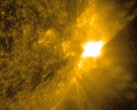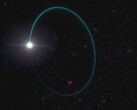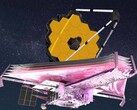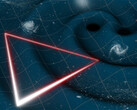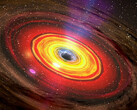WASP-121b, also known as Tylos, is a gas giant at a distance of 880 light years. From a galactic point of view, it is just around the corner, as the distance is only 1 percent of the diameter of our Milky Way.
But even the Enterprise would take over a month to travel at top speed, even if the speed figures in science fiction can never be verified with complete certainty.
If it were an eye test for space telescopes, the row with the smallest numbers and letters would not be 2 yards away. Instead, the board is on the surface of the moon, and it's not just about recognizing an "A", but also perceiving slight changes to this "A".
In any case, Hubble was able to take numerous images in different spectra, at different times and over a period of years. Since the discovery of WASP-121b in 2015, a wealth of data has accumulated.
The perfect object
The fact that the exoplanet can be studied so well is due to its special composition. It is a gas giant, significantly 5,000 times larger than Earth.
It is also at a minimal distance from its home star, so that it is illuminated strongly enough and can be photographed from different angles in a very short time.
Nevertheless, in order to discover weather on a distant planet, all previous data sets had to be evaluated together.
Then the search began for the smallest changes in coloration, temperature measurements and the spectral signature, which allowed conclusions to be drawn about the elements present.
And lo and behold: cyclical patterns indicate changes in the atmosphere. Not exactly comparable with Earth, but probably with the weather on Jupiter, albeit with different elements, under different conditions and in a different solar system.
This is exciting because it provides researchers with a guideline for searching for weather and therefore an atmosphere on other exoplanets that are more similar to Earth than a 3,000 °F gas giant directly in front of a sun.
However, it is not yet sufficient for a valid weather forecast, as the cyclone observed took place almost 1,000 years ago.








